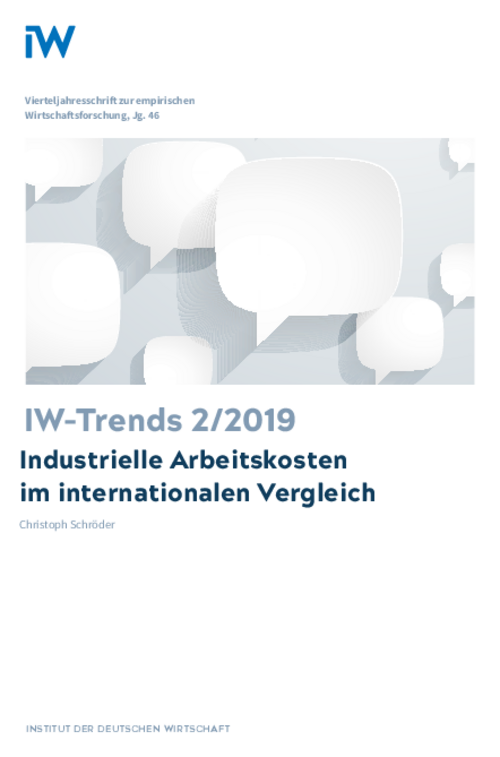In 2018, labour costs in German manufacturing were running at 41.0 euros per employee hour. This puts Germany in fifth place in the German Economic Institute’s comparison of labour costs in 42 countries and means that its costs are almost one-third higher than the average for industrialised countries.

An International Comparison of Industrial Labour Costs
IW-Trends

In 2018, labour costs in German manufacturing were running at 41.0 euros per employee hour. This puts Germany in fifth place in the German Economic Institute’s comparison of labour costs in 42 countries and means that its costs are almost one-third higher than the average for industrialised countries.
There are still large differences in cost levels between eastern and western Germany. At 27.8 euros per hour, eastern German industry produces 35 per cent more cheaply than its western counterpart (42.9 euros). Since the turn of the millennium, whilst worsening slightly compared with other foreign competitors, German labour costs have improved relative to the Eurozone. However, this development has been by no means continuous. Although Germany succeeded in continuously reducing its cost disadvantage vis-à-vis the rest of the Eurozone in the 2000s, after flattening out for four years its labour cost position deteriorated again and by 2018 had worsened by 5 percentage points. The country’s long-lasting boom has thus not only led to growth in employment, but also to an above-average increase in labour costs. German industry’s network of component suppliers and service providers means that manufacturing also involves other sectors, such as the transport sector. The German Economic Institute (IW) therefore also calculates the labour costs of the manufacturing sector including its intermediate consumption network. Taking this combined effect reduces labour costs in German industry in 2018 by a good 2 euros to 38.8 euros. This is the strongest effect in Europe, showing that German industry’s upstream suppliers have particularly favourable labour costs compared to manufacturing itself. Nevertheless, Germany still ranks sixth and is thus in the top group of this cost ranking as well.

Christoph Schröder:Industrielle Arbeitskosten im internationalen Vergleich
IW-Trends

More on the topic

The 9th IW Survey of Further Training
In 2016 some 85 per cent of companies in Germany were active in continuing vocational training, using a broad mix of methods.
IW
Has the German Economy Reached its Limit?: Skilled Labour Shortages as a Brake on Growth
The German economy is performing significantly better than was expected in the first few months of this year. During the course of 2017, certain early fears – especially of a weakening of the global economy due to increasing protectionism – have proved ...
IW